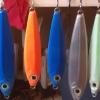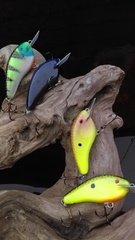Sorry to hear that you have given up on lead-based tackle.
I'm guessing there's something in the methods you use your hygiene practices, or somewhere in there that is causing you to have high lead levels.
I once worked in a lead/zinc mine and was covered head-to-toe in the stuff.
Had my blood drawn every 3 months to check for lead.
While my lead levels did go up I never got to a point where I was taken out of the mine.
After a year-and-a-half I took a transfer to a job with a better schedule, better pay and less responsibility.
Since then my blood levels have dropped significantly and I'm currently sitting at 1 mg/dl as of last month even though I cast hundreds of pounds of it every year. And yes my hands have been black from lead many many many times while cleaning up lead jigs, sinkers, down rigger weights etc.
Proper hand-washing and good hygiene practices have kept me safe.



